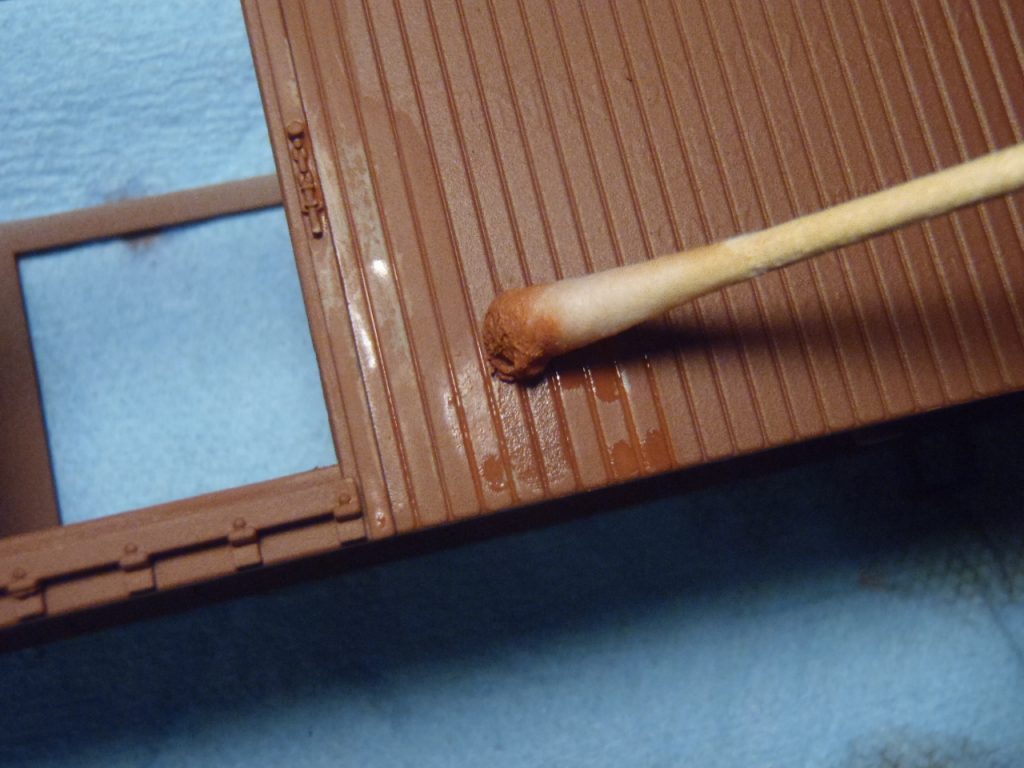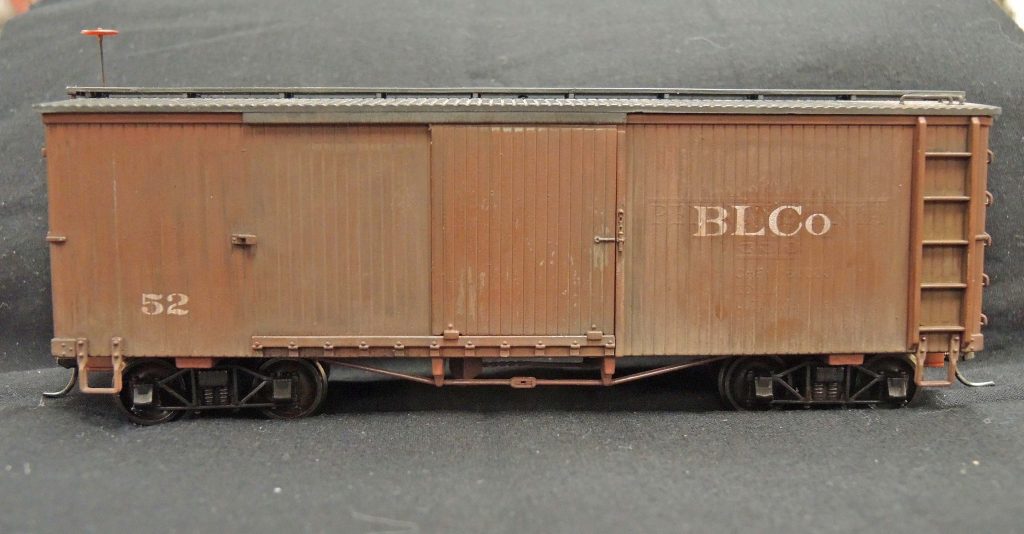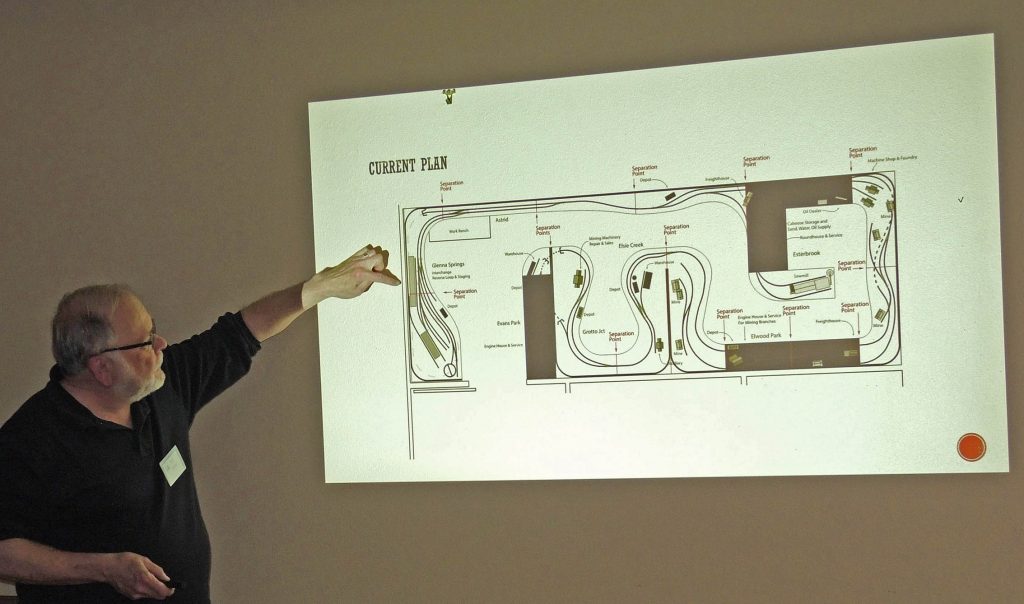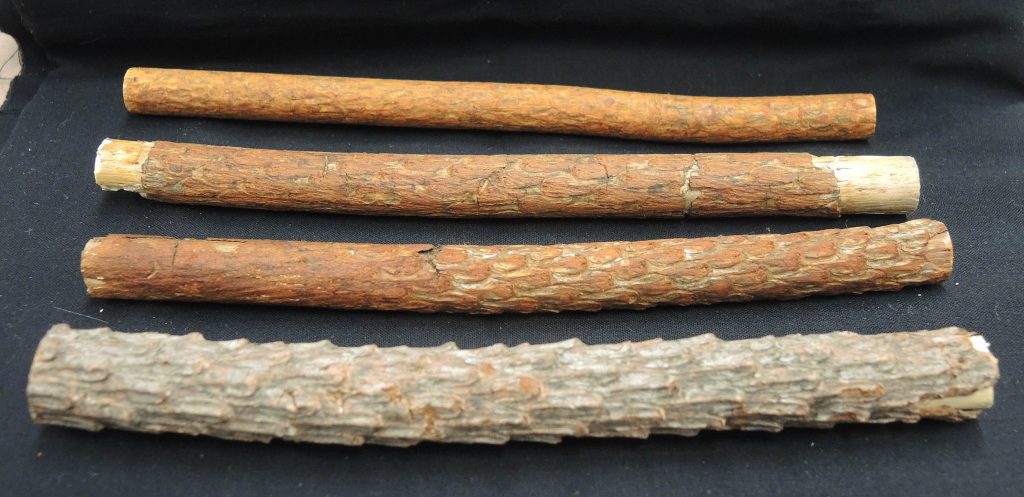By Rich Thom
Photos By Rich Thom Unless Noted
Clinic Chair Rich Blake got a good laugh introducing the evening’s program: “Short Attention Span Theater” he dubbed it, aka the now-customary October program of mini-clinics. Despite Rich’s humor, no-one exhibited short attention span–as far as we know–and interest was high.
Rich showed how he treats RTR On30 plastic freight cars, such as those produced by Bachmann, to upgrade them from shiny plastic models to realistic, weathered rolling stock. He described these steps:
- Apply a basecoat of grey or brown to represent raw wood, using any type paint OK for plastics
- Weather the basecoat using standard wash techniques
- After all paint is thoroughly dry, coat with hairspray and allow to dry for at least 10 minutes. Rich’s preferred hairspray is Aquanet or TRESemme. The hairspray provides a water soluble layer between the topcoat and basecoat.
- Following the hairspray, apply acrylic topcoat. Rich prefers airbrush but rattle cans are OK. Brush-on may be an option but Rich has not tried it
- Revealing the basecoat: After paint has dried, using Q-tips, toothpicks and/or stiff brush with water gently remove top coat to reveal basecoat “bare wood” in areas of your choice; you can go light or heavy (this step illustrated in Fig 1)
- After removing the desired amount of top coat, weather per usual with powders, washes, and a no. 2 pencil to highlight worn “metal” edges
- Apply dullcoat to seal finish
Your reporter has never seen the pencil highlighting previously—clever! Simple and effective.
New clinic member Jon Bentz discussed details of track planning for his new layout the “Rio Como”, an On30 empire which will fill a 13’ x 39’ space in his basement.
Jon is using “semi-permanent” or “hybrid modular” construction to build his pike, a wise decision in the event of a future move to more senior-friendly quarters (an issue your reporter is currently grappling with). The darkened blocks in Jon’s track plan (Fig 3) are existing modules which will be incorporated into the new railroad. Jon used Adobe Illustrator (www.adobe.com) to develop his plan.
Iver Johnson demonstrated making simple and fast furnace filter trees. These are useful for background scenes and other places where large numbers of trees are needed but where realistic detail is not essential. The materials required are: bamboo skewers; bulk furnace filter material; black spray paint, flat or semi-gloss; glue; hair spray; and fine or coarse green turf. The bulk furnace filter material comes in rolls and is available at Ace Hardware and similar outlets.
The process is:
- Cut skewers to length desired
- Cut squares of furnace filter material—about 1” square for HO
- Apply glue to skewers
- Slide the furnace filter squares down the “trunk”, over the glue. Pull the filter squares apart or leave tight together for a really full tree. Place these in a block of foam and let dry
- Trim the filter material to the appearance desired. Do a bunch and let dry
- Spray the tree with black paint. Using a container to catch the excess, immediately sprinkle turf from top down. Turn the tree over and apply more turf on the bottom side. Lightly shake off excess. Put the tree into foam to dry
- When dry, spray with hair spray
- Plant the trees—no watering needed!
Ray Vaughan showed how he makes logs from sticks he finds on his walks near one of Whidbey Island’s coastlines. Ray called them Shore Pine. OK, this is Pinus contorta, also known as lodgepole pine, twisted pine, and contorta pine—your reporter had to look it up. Ray smooths down the bark with a rasp and sandpaper, and then colors them with a furniture scratch pen. One raw stick and three finished “logs” are shown in Fig 5.
Susan Gonzales spoke briefly about “downsizing” one’s collections, in particular railroad historical paper. The Pacific Northwest Railroad Archive (www.PNRArchive.org) is pleased to accept railroad photographs, timetables, correspondence, maps, technical drawings, project files, and similar. Focus is on Pacific northwest railways Great Northern, Northern Pacific, Milwaukee Road, and the Spokane, Portland and Seattle.
Thanks to all who made another mini-clinic evening a success.






No Comments Yet